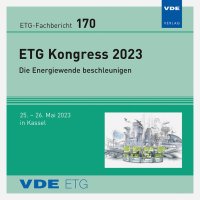Long-term system needs concerning voltage and frequency stability within the interconnected power system of CE
Konferenz: ETG Kongress 2023 - ETG-Fachtagung
25.05.2023-26.05.2023 in Kassel, Germany
Tagungsband: ETG-Fb. 170: ETG Kongress 2023
Seiten: 5Sprache: EnglischTyp: PDF
Autoren:
John, Christoph; Lehner, Joachim; Momenzadeh, Saleh; Sauter, Johannes; Abele, Hans (TransnetBW, Stuttgart, Germany)
Inhalt:
The European Green Deal is stating that the EU is aiming at an energy system with zero net emissions of greenhouse gases by 2050. One key element for achieving this goal is the transformation of the electrical system. It connects all consumers and producers of electrical power and therefore forms the backbone of the European power supply. Due to the change from fossil fuels towards renewable energies, electrical power has to be transported over long distances. This leads to some challenges for grid stability. Therefore, some physical aspects need to be considered so that the transmission system operators of Continental Europe can guarantee a secure and resilient energy supply for every point in time in the year 2050. This paper is focusing on the system needs for steady state reactive power, being a prerequisite for maintaining voltage stability. Furthermore, system split scenarios following a large transit as being one of the most challenging perturbations in terms of frequency stability, are assessed. The investigations are performed for the year 2050, using the same method-ologies as used in the German Grid Development Plan 2035. By doing so, the system needs determined for 2035 by and those for 2050 determined in this paper can be compared and the evolution can be identified. Thus, this paper is giving an outlook beyond 2035, namely for 2050. With regards to both investigated topics, the comparison shows a massive growth in system needs from 2035 to 2050: The need of reactive power compensation for ensuring voltage stability becomes 2.7 times higher. The potential power imbalance due to a system split in Europe will rise by 40%. In order to maintain frequency stability in case of such an event, the need for inertia also increases by the same percentage.


